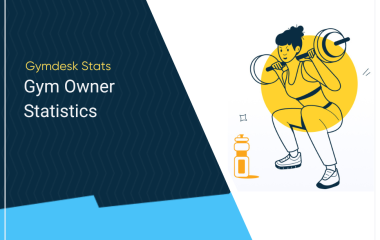So you’re the head BJJ instructor.
You’re teaching classes and you’re running your gym. It’s exactly what you’re supposed to be doing, yet it’s the wrong thing to do.
Wait what?
How can teaching classes and running your gym be the wrong thing to do? Isn’t that a basic requirement for building a successful gym? If you don’t teach, what are students paying for?
It’s the right move in the short term, but it’s the wrong move in the mid to long term. It’s the wrong move because the growth of your gym depends on you specifically. If you want your gym to grow, you’ll need help.
Why You Need Help to Grow Your Martial Arts Academy
During the start-up phase, your company is small.
You’re able to manage the various functions of the business because there’s not a whole lot going on. You’re able to wear multiple hats in your company because, in the beginning,
It’s necessary, it’s just you.
All of that changes as your company approaches the million-dollar level. As you hit this benchmark, the activity in your company outpaces the ability and capacity of the owner (you). It’s simply too much to handle. If you want to grow, you’ll need to recognize the shift from a startup to an established business. From a founder-centric business to one that’s mission-led and supported by a team.
This is where your instructors come in.
Relying on a single person leads to bottlenecks and communication breakdowns as growth is limited or stalled. If you want to grow quickly and achieve great things, you’ll need a team. Today, we’ll take a closer look at why you need good payroll management, and we’ll discuss what you’ll need to manage your payroll well.
Why Payroll Management Matters to Your Martial Arts Academy
Payroll management is the hidden backbone of a successful martial arts school.
Paying your instructors and support staff well, legally, and on time has a significant impact on their performance and the stability of your business. Pay your instructors well, pay them consistently, and they’re much more likely to stay with you.
Here’s why this matters.
A-player instructors attract A-player students—the kind of students who are engaged, value your work, pay consistently, and work hard. In this guide, we’ll break down a few specific factors:
- What influences instructor pay
- How to classify workers correctly
- The pros and cons of different payment structures
- The five steps to running payroll for instructors
Let’s dive right in.
What Influences Brazilian Jiu Jitsu Instructor Pay
Several factors influence instructor pay. If you have a good grasp on these factors, you can create a pay structure that’s consistent, fair, and aligned with your academy’s financial situation.
Factor #01: Location
Gyms in large metropolitan areas typically pay more. They have more students, and the revenues from membership dues tend to be higher. The cost of living is also higher. There’s a greater supply of students, so successful gyms have more revenue to spend.
According to ZipRecruiter, the annual salary for Jiu Jitsu Instructors ranges from $23,000 to $98,000. This significant variance is due to the location in rural versus urban areas.
Here’s an average for each location type.
- Rural Areas: $20-$35 per hour, with annual salaries averaging under $40K
- Mid-sized Cities: $30-$50 per hour, with an annual salary range of $40-60K
- Major urban areas: Cities like NYC, LA, Austin, Chicago, etc., range from $50-$100 per hour, with an annual salary range of $60-$90K
Factor #02: Class size/gym revenue
Instructor compensation scales with success.
Brazilian Jiu Jitsu academies in larger cities and urban areas experience a greater demand for their services, despite increased competition. As a result, academies with more students/revenue can spend more to recruit/retain staff.
Gyms earning $50,000 per month can afford to spend more than gyms bringing in $15,000 per month.
Factor #03: Experience and Belt Rank
No surprise, belt rank and years of teaching experience tend to be the strongest predictors of pay. The payment scales for these tend to be subjective; that said, here’s an example you can use for reference.
- Blue/Purple belts ($15-$30 per hour): These are generally your assistant instructors. They tend to be exceptional students in your gym who are already teaching in an informal capacity.
- Brown belts ($25-$50 per hour): These teachers come with moderate to significant teaching experience. They can be assistants in a large gym or head coaches in smaller gyms.
- Black belts ($40-$100+ per hour): These black belts have a significant amount of teaching experience and often command $50,000 to $80,000 annually, depending on whether they’re teaching full-time or part-time.
- Elite-level competitors ($100+ per hour): These are high-level athletes with extensive competition experience and advanced skills. They have national or international reputations, and generally, they command higher rates. Their annual income often exceeds six figures, once seminars, sponsorships, and fight purses are included.
Again, treat these figures as general guidelines; you’ll want to test these figures out in your area. Figure out what instructors in your neck of the woods are willing to accept.
Factor #04: Certifications, specializations, and accolades
Instructors with additional cross-training (e.g., self-defense/combat training, kickboxing or Muay Thai, strength and conditioning, etc.) often earn more.
Why?
These instructors bring more value to the gym. They can teach a diverse set of programs and classes in your gym, often at a significant discount. These certifications, specializations, and accolades can also serve as a draw, attracting new students to the gym.
Here are a few examples of instructors:
- 2x ADCC Trials winners
- 11x IBJJF Worlds Champion
- Active kickboxer, with experience fighting in small and large promotions (e.g., LFA, ONE, etc.)
- BJJ Black Belt, Muay Thai fighter with 12 years of experience
- D1 NCAA runner-up, BJJ Purple Belt, and Black Belt Judoka
See what I mean?
Any of these instructors would bring significant value to the gym and draw students in. Even better, any of these instructors would be more than qualified to teach several classes in most gyms.

Employees Or Contractors? Classifying Instructors Properly Per IRS Guidelines
It’s really important to classify your instructors correctly. It’s an important question.
Employees or Contractors?
Here’s why this matters. If you get it wrong, the IRS may say you’re on the hook for a variety of fees, expenses, and payments, including:
- Overtime
- Minimum wage
- Medicare taxes and Social Security
- Employee benefits, such as paid holidays
- Compensation insurance for workers
- Unemployment compensation tax
As a general rule, the more control you have over your instructors, the more likely they are to be classified as employees by the IRS. The IRS looks at facts “that provide evidence of the degree of control and independence” your instructors have. This generally falls into three categories:
- Behavioral: Does the company control or have the right to control what the worker does and how the worker does his or her job?
- Financial: Are the business aspects of the worker’s job controlled by the payer? (these include things like how the worker is paid, whether expenses are reimbursed, who provides tools/supplies, etc.)
- Type of relationship: Are there written contracts or employee-type benefits (that is, pension plan, insurance, vacation pay, etc.)? Will the relationship continue, and is the work performed a key aspect of the business?
Here’s an important detail that the IRS points out.
“There is no ‘magic’ or set number of factors that ‘make’ the worker an employee or an independent contractor, and no one factor stands alone in making this determination. Also, factors relevant in one situation may not be applicable in another.
The keys are to look at the entire relationship and consider the extent of the right to direct and control the worker.”
Let’s take a brief look at the differences between the two:
- Employees work primarily under your control. This means you determine their schedule, outline their teaching style and methods, set class requirements, and determine the format. From a financial standpoint, you withhold taxes, pay employer FICA, and offer employee benefits.
- Contractors are independents who control how they work. They determine how they work, what they cover in classes, and their teaching style. They pay their own self-employment taxes, and of course, they aren’t eligible for employee benefits with your company.
Common Mistakes the IRS Frowns on
- No written contracts between the employer (you) and contractors (instructors)
- Treating similar workers differently (e.g., treating two workers with different classifications—employee/contractor) the same
- Providing tools and supplies for instructors to use
- Reimbursing expenses
- Paying by the hour (vs. a flat rate)
- A failure to use consistent forms, signage, and documentation
- Oversupervising and micro-managing
- Assigning employees to help contractors
- Requiring set hours (e.g., this can be tricky with a martial arts studio)
- Requiring full-time work and/or no competition
- Offering contractors a dedicated workspace
- Treating full-time, long-term staff as contractors
- Failing to issue 1099 forms for contractors who earn more than $600 annually
- Mixing employee and contractor roles without clear documentation
- Misclassifying employees as contractors
- Missing quarterly estimated payments
- Forgetting to file your annual forms
Remember, the way you classify your instructors has huge legal, tax, and compliance implications for your business. More control generally indicates an employer-employee relationship. Less control points typically to an employee-contractor relationship.
Breaking Down Hourly Rate vs Salary vs Commission
Which compensation scheme is best for your gym/instructors?
| Hourly | Salary | Commission | |
| Pay: | $20-$100 per hour. | $35K to $80K annually for head instructors | Tied to sign-ups, retention, or privates |
| Pros: | Easy to calculate; payment is flexible for part-time staff. | Financial stability for instructors. Predictable costs for the gym | Direct 1:1 incentives for growth and retention |
| Cons: | No instructor incentives for student growth or retention. | A cash flow strain for smaller gyms. Less flexibility | Hard to track, may create conflicts with staff |
| Best for: | Small gyms with part-time staff | Mid-to-large gyms with stable revenues | Growth-focused gyms |
| Example: | $40/hr × 20 classes = $3,200/month | $50,000/yr ($4,167/month) | 20% of new student fees, 10% of privates |
How do you go about managing payroll for your instructors?
5 Steps To Payroll Management For Jiu Jitsu Instructors
Here’s a five-step process you can use to run payroll for your jiu jitsu instructors. You’ll want to choose a compensation scheme carefully, then stick to it.
Step #01. Collect Employment And Tax Information
Here’s a quick checklist you can use to collect the forms that you need.
- Tax Forms: W-4 (employees), W-9 (contractors), a list of state withholding forms
- Personal Information: Legal name, address, SSN or Tax ID
- Banking Details: Routing/account numbers for direct deposit
Step #02. Choose A Payroll Schedule
Choose a schedule you can stick to.
- Weekly
- Bi-weekly (most common)
- Semi-monthly
- Monthly
You want to balance frequent payments to your employees, but it’s also ideal if you can manage your cash conversion cycle (CCC) effectively. What does CCC mean? You’re shortening accounts receivable and extending accounts payable.
It’s a great idea to align your payroll and membership billing cycles to optimize your cash flows. Provide your instructors with a written payroll policy in advance during the onboarding process.
Step #03. Calculate Gross Pay Vs Net Pay
Here are a few example formulas you can use.
- Hourly pay: 10 hrs × $40/hr = $400 gross minus taxes/withholdings = net pay
- Salaried employee: $50,000/yr ÷ 26 pay periods = $1,923 gross bi-weekly
- Commission Example: 10 new sign-ups × $150 enrollment fee × 20% = $300 commission
- Special Cases: Private lessons (flat % split), seminars (flat fee or revenue share)
Step #04. Manage Withholdings And Deductions
- Federal Income Tax: This is based on W-4 elections (use the IRS withholding calculator)
- FICA Taxes: Social Security (6.2%) + Medicare (1.45%) matched by employer
- State/Local Taxes: Vary by location (look up your state and local taxes via TaxFoundation)
- Voluntary Deductions: Health insurance, retirement, uniforms
Step #05. Automate Record Keeping And Payments
- Maintain accurate payroll logs (protects against audits, builds trust)
- Pay via **direct deposit** (faster, safer than checks)
- Use payroll software or cloud storage for digital records
- File:
- Set alerts for deadlines in your calendar or via your payroll software
Managing Taxes And Compliance
As the owner of a martial arts academy, your tax obligations include:
- Employer taxes: FICA, unemployment insurance
- Quarterly estimated payments for federal/state taxes
- Year-end forms: W-2 for employees, 1099-NEC for contractors (see links above)
- Workers’ compensation: This is a requirement in most states if you’ve hired employees
Choosing Tools And Software For Payroll
When it comes to managing your payroll, you have three options.
- Running payroll manually: It’s cheap to run your payroll manually—you have full control. The downside? It’s slow, prone to errors, and a major burden as your gym grows.
- Outsourcing payroll offers several advantages, including significant time and cost savings, improved accuracy, and access to specialized payroll expertise. This sounds great until you realize you’re facing a loss of direct control, hidden costs, and an increased risk of data security breaches.
- Using software to manage payroll: The pros outweigh the cons in this case. If you’re using software to manage payroll, you can expect to see increased efficiency and accuracy, better compliance, consistent cost savings (thanks to fewer errors and decreased labor), and enhanced data security.
What do these options look like?
- DIY (spreadsheets): This option is free, but it requires a lot of time, knowledge, and skill to manage successfully. It can be done, but you’re always one mistake away from a major tax or legal issue; it’s a risky and error-prone approach. It’s also expensive; if you earn $50 per hour and you spend 10 hours a month on payroll, that’s $500 in labor costs.
- Payroll Software: Tools like QuickBooks, Gusto, and ADP are priced in the $50–$180 per month range. This doesn’t include per-employee fees.
- Gymdesk: Combines student billing, membership management, and payroll integrations in one platform. With Gymdesk, you can manage your entire gym from a single, centralized dashboard.
Payroll Software Comparison
Let’s take a look at how these software options compare against each other.
| QuickBooks | Gusto | Gymdesk | |
| Pricing: | $50-$134 per mo. (plus $6.50, $10, or $12 per employee, per mo.) | $49-$180 per mo. (plus $6, $12, or $22 per employee, per mo.) | Ranges from $75 to $200 per mo. |
| Features: | Tax filing and direct deposit | Manage employee benefits, automated filing features | Handles all aspects of your gym, including: billing, payroll, enrollment, member management, and marketing |
| Best for: | Small businesses looking for an all-around general tool | Growing gyms | Martial arts schools, Fitness studios, and Performance gyms |
With Gymdesk, you get all of the benefits of payroll management in a single, centralized tool that you can use to manage your BJJ academy from A to Z.
Building A Sustainable Jiu Jitsu Salary Plan
If you want to scale your gym, your payroll will need to align with your revenue operations.
What exactly does this mean?
- Budgeting: It’s a good idea to set aside 25–35% of your monthly recurring revenue (MRR) to instructor pay.
- Incentivize Growth: If you want to incentivize retention and growth, add a commission or bonuses plan that’s directly tied to student retention, referrals, or class attendance.
- Scaling: As student membership grows, build a virtual bench that consists of part-time assistants and independent contractors working on a 1099 basis. Build these relationships first, before hiring full-time staff.
- Retention: A-player instructors attract A-player students. If you want to keep your instructors, do your best to offer competitive pay, health benefits, and opportunities for seminars/private lessons to retain teaching talent.
Ready for the next step?
Get everything you need to manage payroll for your BJJ academy. Try Gymdesk’s 30-day free trial and see how easy it is to simplify your payroll and gym management. No obligation or credit card required, we’ll earn your trust.
FAQs About BJJ Instructor Payroll
How do I handle pay for seminars and special events?
Generally, these are treated as a fixed cost; Treat these as flat fees, contractor payments, revenue, or profit shares that are outside of your normal payroll obligations.
Can I manage payroll for multiple martial arts programs together?
You can, but it’s a smart idea to consolidate and run your payroll through a single system. Just be sure to maintain clear accounting for each program.
What are the tax implications of paying instructors as contractors versus employees?
It’s pretty straightforward. If you have employees, payroll tax withholding is a requirement. If you’re working with independent contractors, they pay their own self-employment taxes.
How much should I budget for instructor salaries when opening a new jiu jitsu gym?
It’s a good idea to allot 25–35% of your monthly recurring revenue towards instructor pay. This, of course, assumes that you have A-player instructors who are worth the investment.
Do I need special insurance when adding instructors to my payroll?
Yep, most states in the US require that you carry workers’ compensation and liability insurance for your employees.
You Need Help to Grow Your Martial Arts Academy
What got you here won’t get you there.
During the start-up phase, your company is small.
You’re able to manage the various functions of the business because there’s not a whole lot going on.
That changes as your company approaches the million-dollar level. When this happens, the activity in your company outpaces your ability and capacity to keep up with it. It will be too much for you to handle. If you want to grow, you’ll need to recognize this shift and move from a startup to an established business. From a founder-centric business to one that’s mission-led and supported by a team.
Payroll doesn’t have to be a stressful or difficult experience.
Treat payroll as the backbone of your BJJ academy. Create a compensation structure that fairly compensates your instructors. Classify your instructors correctly, use the right tools, and you’ll find it’s easy to focus on what matters most—building a championship team that performs on and off the mats.
 Gym Owner Statistics: The State of Gyms, Member Trends, and Usage Data
Gym Owner Statistics: The State of Gyms, Member Trends, and Usage Data




 EN (English)
EN (English)
 JA (日本語)
JA (日本語)